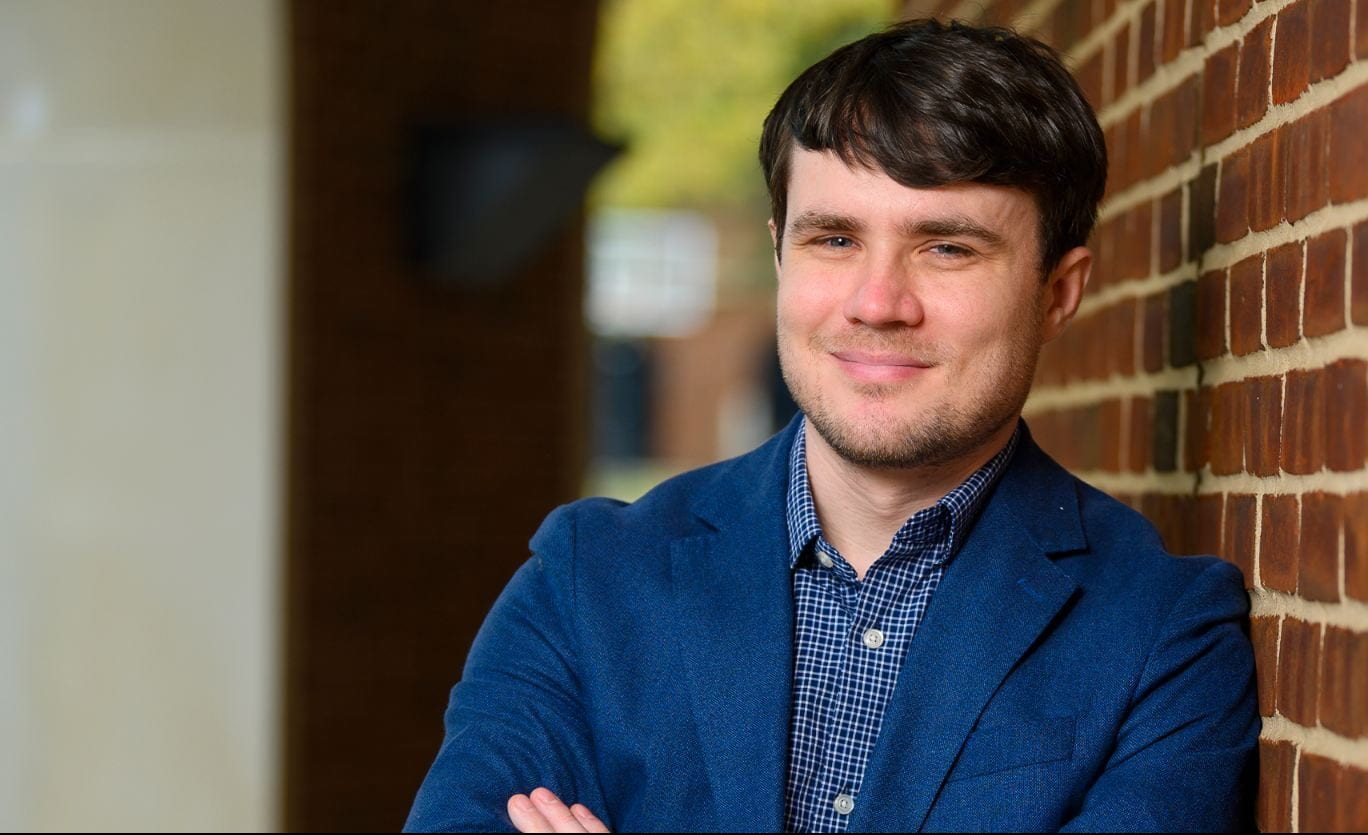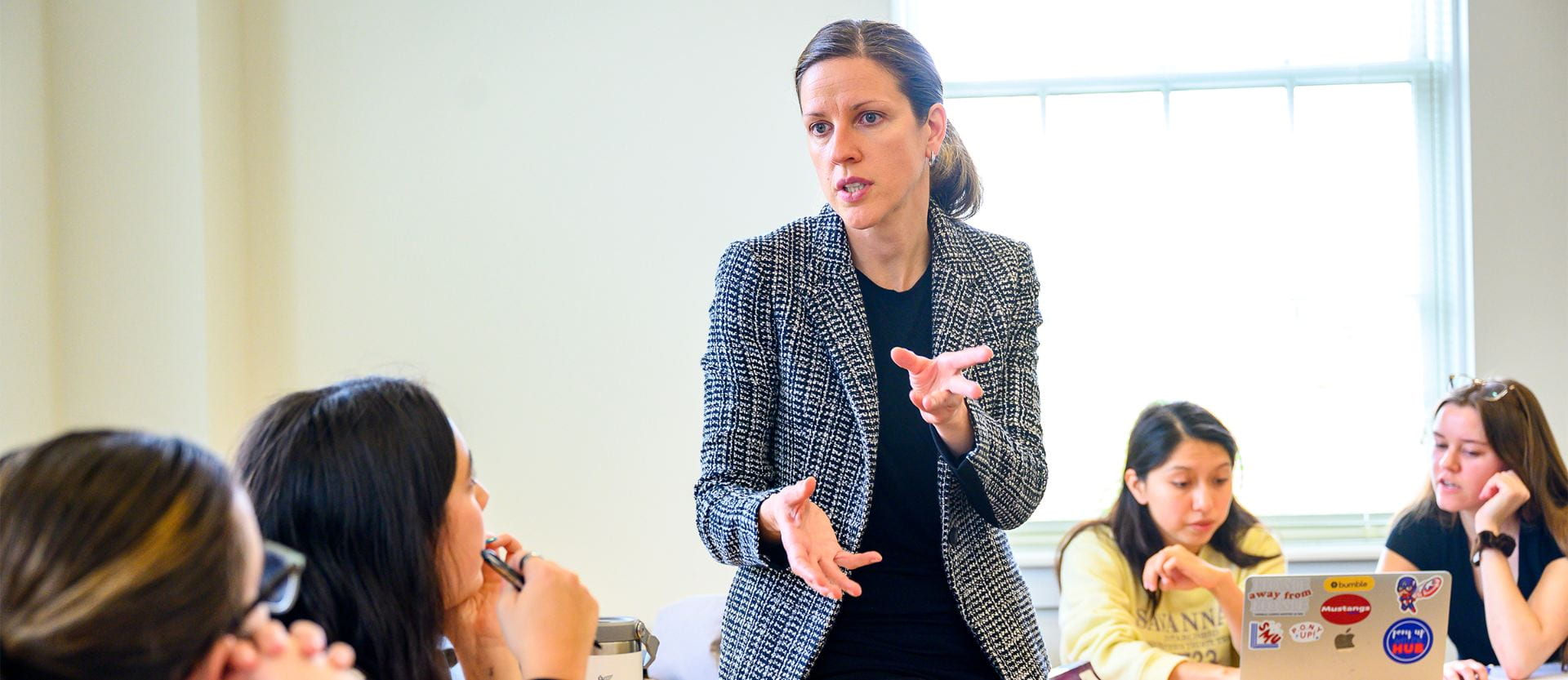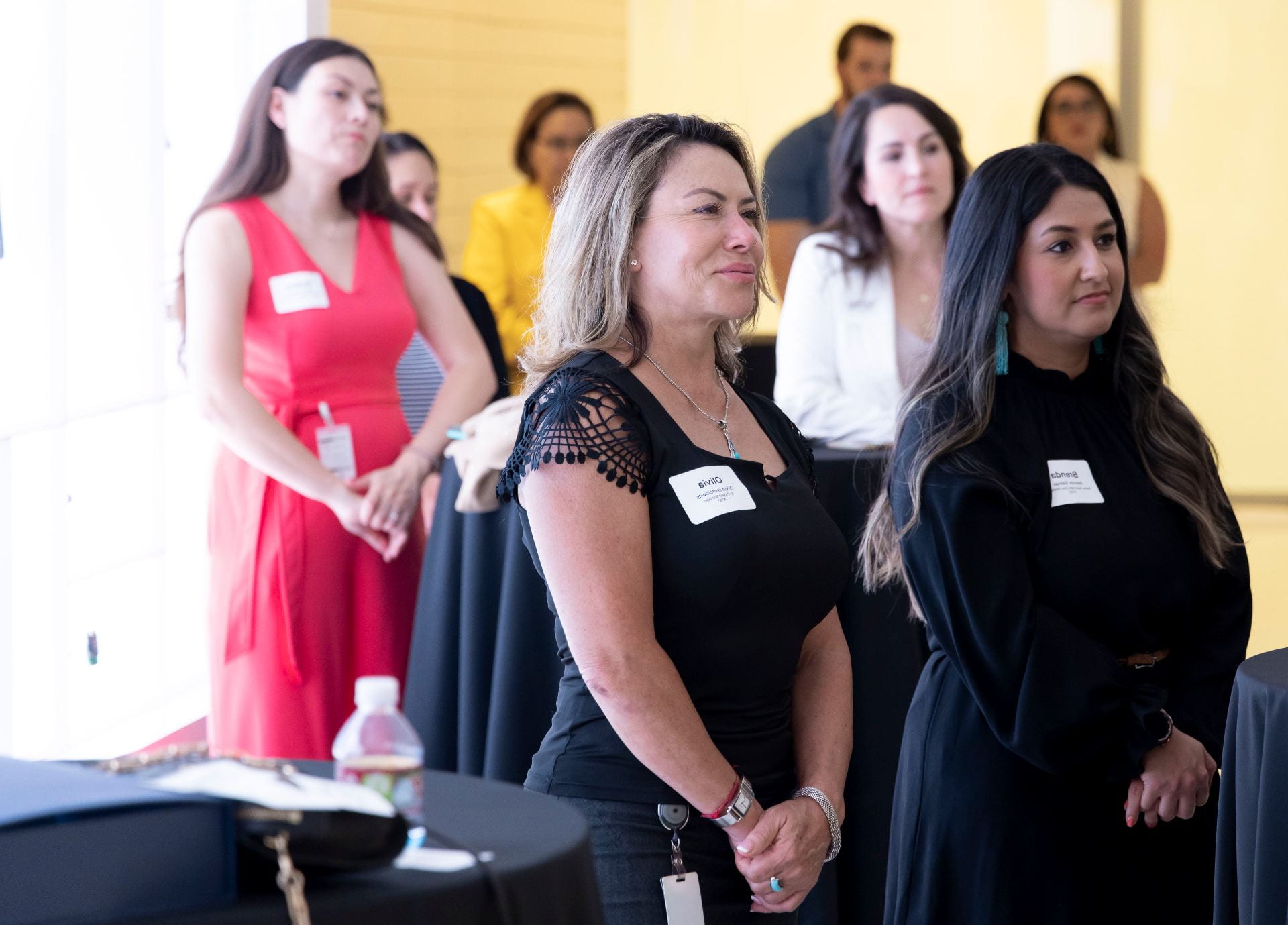Since the start of 2020, the United States has been gripped by a global pandemic, undergone an economic collapse and seen mass public protests from coast to coast. While the situation brings to mind the aphorism, “May you live in interesting times,” it’s also put on display a plethora of examples of both cowardly and courageous leadership during crisis.
The moment serves as what SMU Cox School of Business Associate Dean Shane Goodwin calls “a clarion call to exercise transformational leadership through this extraordinary time.” That, Goodwin says, involves both decisive action now and immediate planning to retool an organization or business for the future.
Goodwin leads executive education and graduate programs at the Cox School. He also spearheads the Applied Corporate Governance Institute at the Center for Global Enterprise, a nonpartisan, nonprofit research organization devoted to what the center’s website describes as “the study of global management best practices, the contemporary corporation, economic integration, and their impact on society.” The group advises companies on engagement with shareholders in complex and contested shareholder matters.
Goodwin recently created and presented a leadership webinar and authored an accompanying paper called “Leading In Unprecedented Times: A Mandate to Be Bold ― And Remain Bold.” He describes several universally applicable strategic imperatives for leadership and provides a series of what he calls “behaviors and bold moves” that organizations can undertake to help ensure a successful future.
By “bold,” Goodwin means “really having courage.” A courageous leader does not simply follow the lead of others, but confronts reality head-on, motivates, inspires and guides others toward a greater good. “They champion change and diversity,” he says, “challenge the status quo, lead with empathy and humility, and avoid the crutch of ‘analysis paralysis’ and make a decision. The ultimate measure of a leader is not where one stands in moments of comfort and convenience, but where one stands during times of challenge and controversy.”
We spoke to Goodwin about the Cox School’s own approach to courageous leadership and the actions it has taken over the past couple of months to protect its students, faculty and legacy.
A Different Time Not So Long Ago
In February, the Cox School of Business celebrated its centennial anniversary, a history that’s seen the school go from a small set of buildings in an otherwise empty prairie to one of the most preeminent business-education institutions in the nation. Within three weeks of this historic milestone, the school announced its campus was closing and all graduate and undergraduate classes were moving online for the remainder of the semester — possibly longer. The roles and responsibilities of faculty and staff to students at all levels had changed dramatically, virtually overnight.
“Before COVID-19, we were working on our ‘Next Generation’ Strategic Plan, which focused on enhancing our scholarly research, fostering innovation, offering new and updated degree and nondegree programs, increasing profitability and gaining market share,” Goodwin wrote. “Today, we need to be agile as we encounter unforeseen obstacles — student-learning outcomes in the virtual classroom, staff and faculty shortages, and other operational challenges — that drastically alter the scope of our roles and priorities. All the while, our teams are navigating health and safety concerns, working remotely and supporting their families through the pandemic.”
The goal at SMU Cox, like so many businesses and organizations across the world, instantly became more than surviving this crisis; it became ensuring that the school will thrive in the future.
A Lifetime of Examining Courageous Leadership
The ideas presented in Goodwin’s webinar and paper stem from his own personal experiences. He was living in New York City with three small children in September 2001. He was literally one block away from the World Trade Center when the first plane hit on 9/11, and he watched as the world responded to what he calls “exogenous shocks in our lives.” Seven years later, Goodwin also had an up-close view of the Great Recession of 2008.
“I was on Wall Street working at Goldman Sachs,” he says. “So I had a front-row seat to what was happening in our financial and our capital markets at that time.”
The current situation, of course, is different. Nothing in our lifetimes has prepared us for mass quarantines. Many of us have had to deal with massive changes to our day-to-day work life: not just working from home and dealing with the new environment of video- and teleconferencing, but also a completely new global economic landscape. On top of that, many parents suddenly became homeschool teachers. Most people have also had to deal with a variety of personal tasks and responsibilities they otherwise wouldn’t have, from safely procuring groceries and cooking at home to finding new ways of socializing, mitigating stress and DIY haircuts.
“We keep peering through this fog of uncertainty,” Goodwin says. “It obviously raises that two-prong question: When will normality return and then what will that look like?”
Not only do we have a dearth of information about what the future might look like and when normalcy may return, the country is already seeing some changes that will extend indefinitely. Facebook and Twitter, for example, have both announced that, going forward, their employees will be allowed to work from home as often as they choose.
All of this inspired Goodwin — who played sports growing up and witnessed a variety of leadership approaches throughout his career — to write about the particular imperatives and six specific behaviors he believes constitute courageous leadership and governance.
A Focus on People, Process and Purpose
First and foremost, Goodwin stresses, during a crisis like this, courageous leadership involves focusing on people and values. We’ve already seen numerous examples of leaders stressing profits and economic health over the risk to human life — and suffering catastrophic loss to both as a result.
“In routine emergencies, the typical company can rely on its command-and-control structure to manage operations well by carrying out a scripted response,” Goodwin wrote. “But in crises characterized by uncertainty and ambiguity, leaders face problems that are unfamiliar and poorly understood.” In a moment like this, success or failure is much more likely linked to an overall behavior, mindset and framework of the team.
Adaptation is essential, despite the uncertainty and ambiguity. Organizations have to not only figure out a way to proceed safely for all the people involved but in a way that also accounts for disruptions to their business models.
During the first days of the COVID-19 pandemic, restaurants that previously subsisted primarily on dine-in patrons were figuring out new curbside and takeout approaches. Several businesses that had no experience manufacturing medical equipment began making ventilators and respirators. Apparel companies switched to producing personal protective equipment for medical professionals and masks for the public.
“The real-time ability to learn during a crisis is, in fact, the one ingredient that can turbocharge your ability to scale quickly,” Goodwin writes. “It’s imperative to have agility and find a new cadence for problem-solving. Strong leaders get ahead of changing circumstances.”
In his webinar, Goodwin describes four ways to act immediately:
- Respond to the crisis and protect the business.
- Safeguard business continuity and stability.
- Engage in iterative, agile problem-solving.
- Learn while scaling at the pace of the crisis.
He also lists four ways to start planning now:
- Reinvent your business model at its core.
- Innovate and evolve your business portfolio.
- Accelerate through the recovery.
- Retool for the new world.
Instead of specific tactics or tasks, Goodwin says, bold and courageous leadership is when efforts are centered on general behaviors that will prevent organizations from overreacting to yesterday’s developments and, instead, help them look ahead.
Bold Behaviors
As the pandemic unfolded, Goodwin and his colleagues at the SMU Cox School of Business began analyzing what the school was doing right. A few things, he noticed, weren’t even intentional at first — they were behaviors, instincts and actions that grew out of the mindset and value system the school had already established. In his webinar and in his paper, Goodwin identified several behaviors he believes characterize bold and courageous leadership, then explained a correlating action the school has taken in the past few months.
Behavior One: Lead with Empathy
Leading with empathy means prioritizing the health and well-being of all the stakeholders, including the leaders themselves. In a crisis, people are understandably concerned about their own survival and the survival of their loved ones. It’s important to be understanding about how that might affect everyone involved. Priorities shift drastically, and the setting changes rapidly. COVID-19 led not only to the closure of school campuses across the country but also to governments around the world quickly establishing travel bans and quarantine requirements.
In early March, SMU Cox had numerous students, faculty and staff overseas, so the first priority was their health. As soon as campus closed, staff and faculty went to great lengths to move classes online. Goodwin wrote that the school “paid careful attention to how our students, faculty and staff were responding and took corresponding measures to support them.” Not long after mass quarantines started, the school also waived the GMAT and GRE application requirements — weeks before other institutions took similar actions.
“Now, more than at any other time in our school’s 100-year history, compassion is the order of the day,” Goodwin wrote.
Behavior Two: Streamline Decision-Making
The best leaders don’t always necessarily make great decisions, but they do make difficult decisions — and they make them earlier and with more conviction, even when there’s not an enormous amount of information available. It’s just as important, though, to recognize and acknowledge mistakes and learn from them. Goodwin cites the old adage: “Good judgment comes from experience, and experience usually comes from poor judgment.”
Early on, the leaders at SMU Cox decided to implement a flexible, operational and organizational structure. In an effort to continue to attract the most desirable students, the school integrated the admissions team and the Career Management Center, improving collaboration and communication while providing prospective students with more up-to-date career insights. The school also redeployed various scholarships.
Behavior Three: Embrace Innovation
More and more, Americans have transitioned their business meetings to Zoom calls and Google Hangouts. Even the Supreme Court, long resistant to adapting to modern technology, has resorted to hearing arguments over conference calls. (Many of the Court’s justices are in the most vulnerable age demographic.) Strong leaders not only embrace these types of changes in the face of new challenges, they learn from the innovations.
Goodwin says the administration and faculty at SMU Cox set about not only creating rigorous, enriching online classes but also created a daily Zoom call structure and weekly dashboard reporting of priorities, with a focus on making certain to still meet various graduate-program admission goals.
Behavior Four: Engage for Impact
A common example of poor leadership can be found when leaders advocate values or habits but don’t model them in their own lives. Courageous leadership consists of reinforcing an organization’s values from the top, early and often, Goodwin says.
An organization’s purpose, culture and values are tested in turbulent times. At SMU Cox, the culture committee has organized “virtual happy hours” to encourage team cohesion and stress the school’s purpose, culture and values. It’s critical, Goodwin stresses, to “lead with humility and lean into our core — our character and personal values — to find our “North Star” and to focus on what really matters.”
Behavior Five: Adapt with Agility
Perhaps the most difficult challenge in an uncertain time is balancing between surviving today and succeeding tomorrow. It’s a divide of not only time and effort but of focus and emphasis. Being able to respond to challenges and adjust quickly was important before the pandemic, but that agility is even more important today.
Traditionally, the MBA programs at SMU Cox have required several years of work experience as a prerequisite for admission. Allowing students to matriculate directly from an undergraduate program to an MBA can create what Goodwin calls “misaligned expectations” for applicants and can “tarnish” a graduate business school education. But administrators at the school noticed that, because of the current job market, some graduating seniors were interested in pursuing an MBA degree immediately.
So they leveraged the year-old Online MBA program to create a brand new MBA program, the Cox MBA Direct, with adjusted prospects for applicants. Establishing an entirely new graduate program usually takes years. At SMU Cox, it was done in weeks.
Behavior Six: Communicate Effectively
During any crisis, even courageous leadership involves the risk of either hitting the wrong notes with communication — seeming overconfident or upbeat in a way that raises suspicion, for example — or delaying announcements and decisions for long stretches as they wait for facts to emerge or for the situation to change. Both approaches can be disastrous for different reasons. But always striking the right chord is impossible too. The key, Goodwin says, is transparency.
“In our stakeholder messaging, we balanced optimism with realism,” Goodwin wrote. “We wanted to reassure our stakeholders that we were confronting the crisis — that we hoped for the best but acknowledged and prepared for the worst.”
In the end, Goodwin says, an organization’s culture is defined not simply by what it achieves but also by what it overcomes.
“That’s what determines your future,” Goodwin says. “That’s what will define the Cox School.”
Click here to read more stories of courageous leadership in the shifting business world, as well as other insights from our faculty at SMU Cox.














